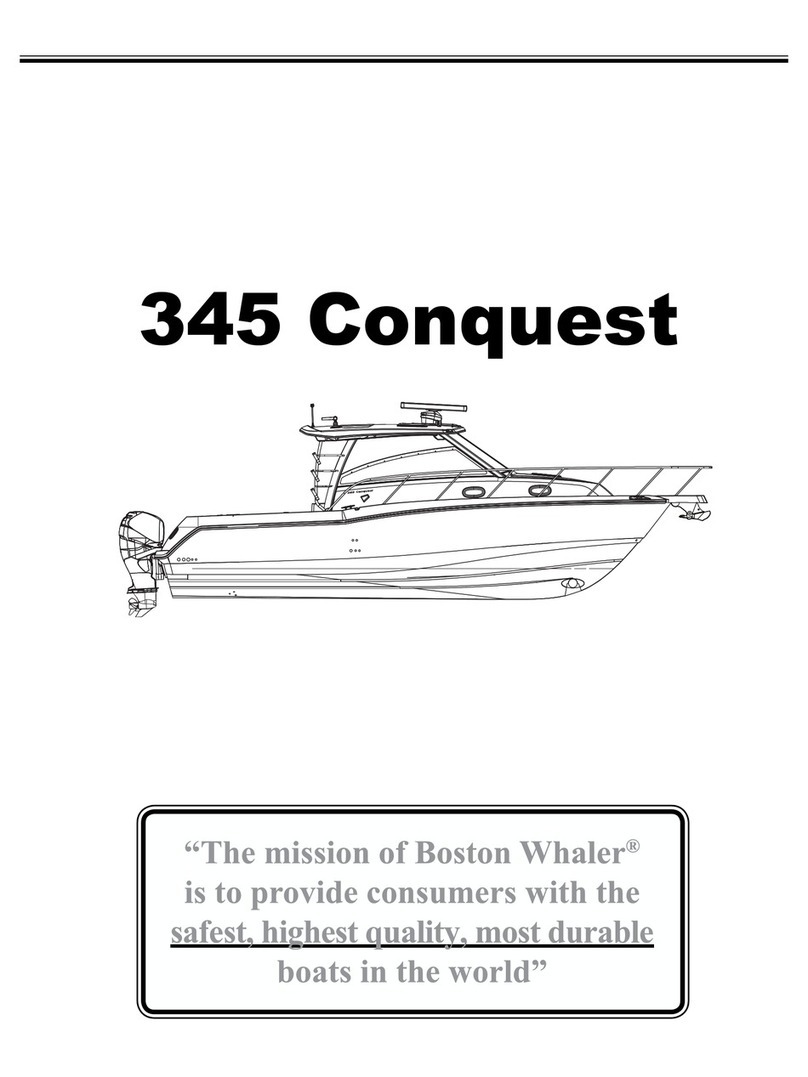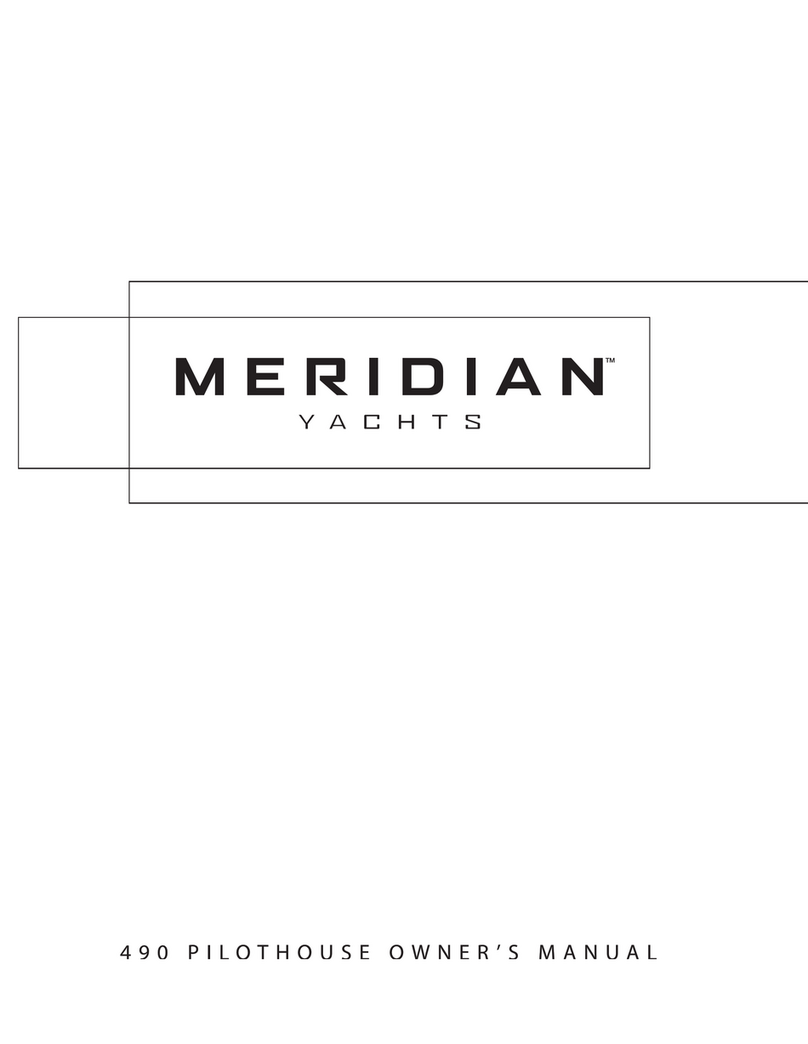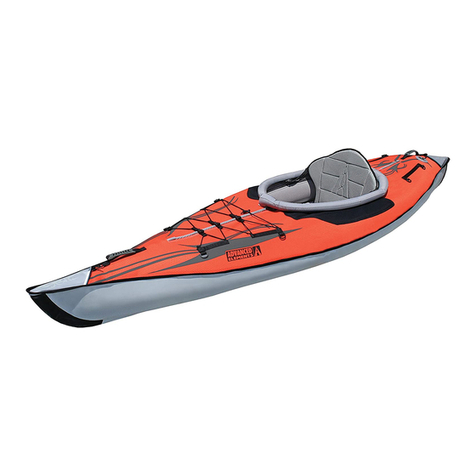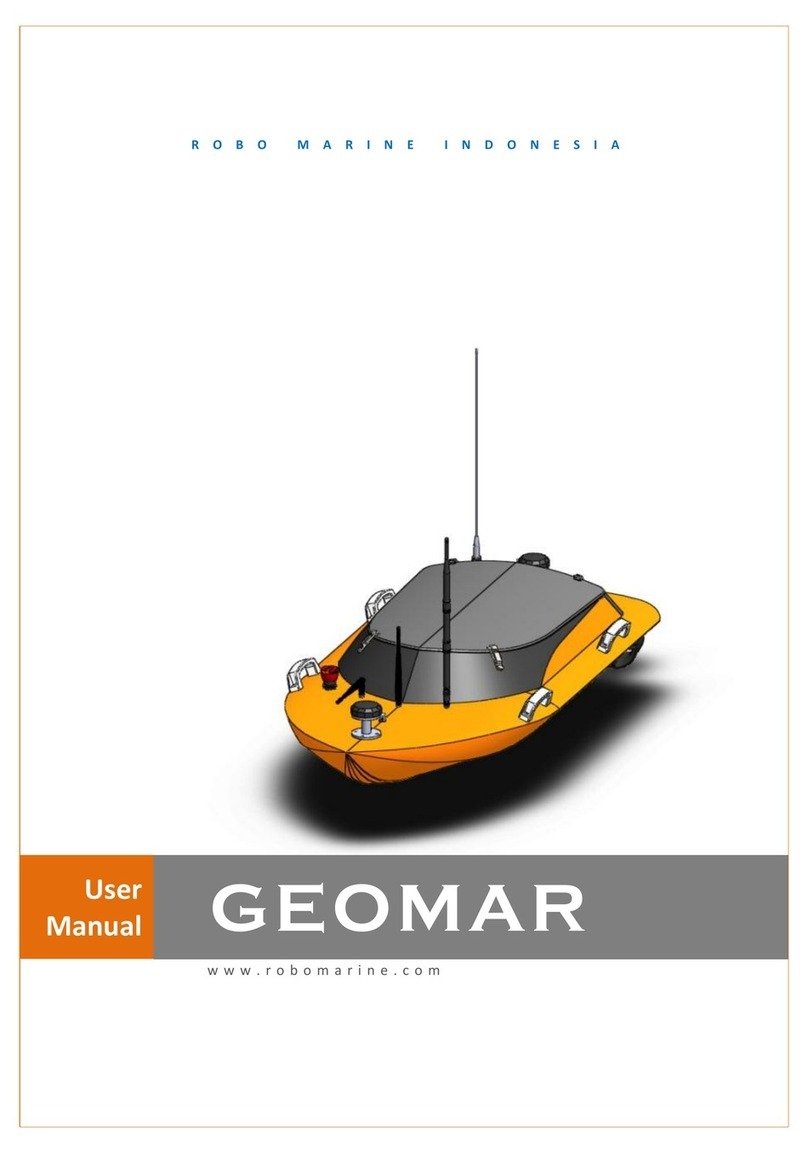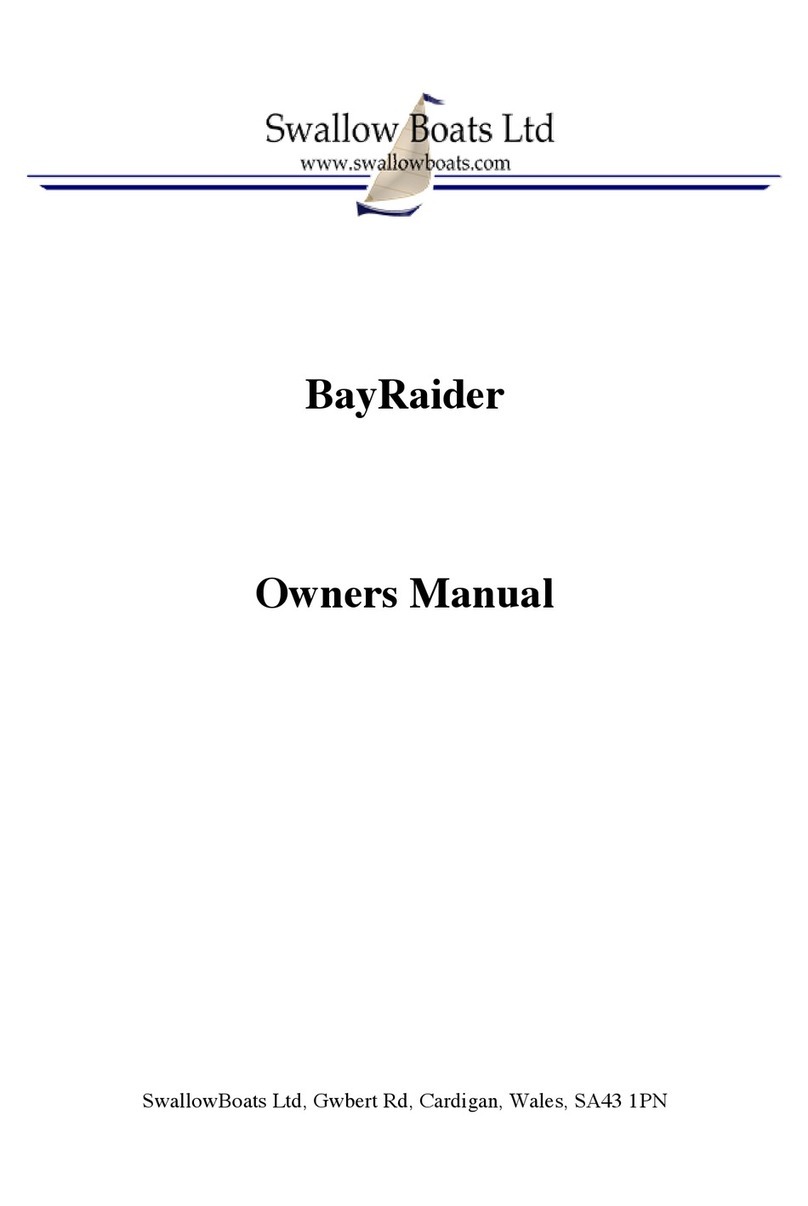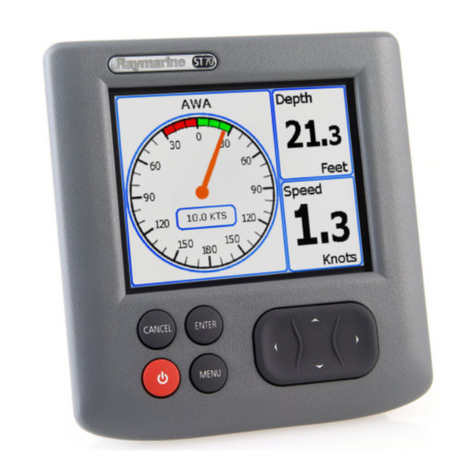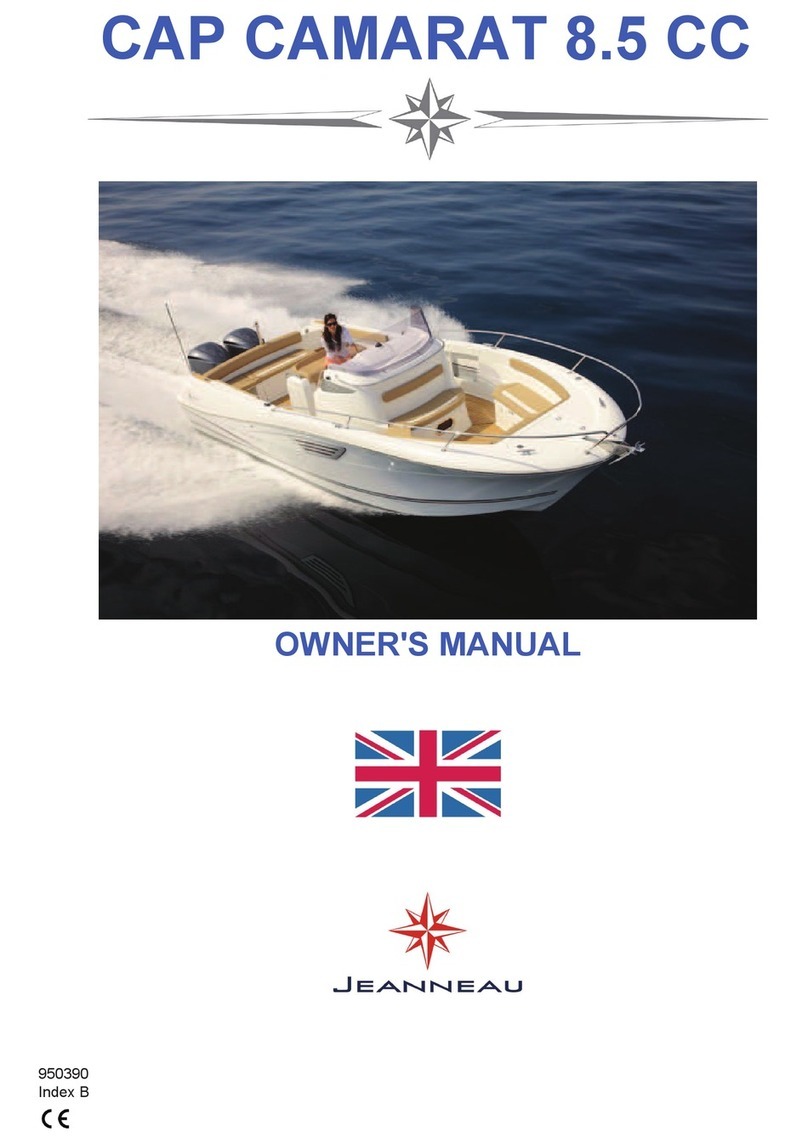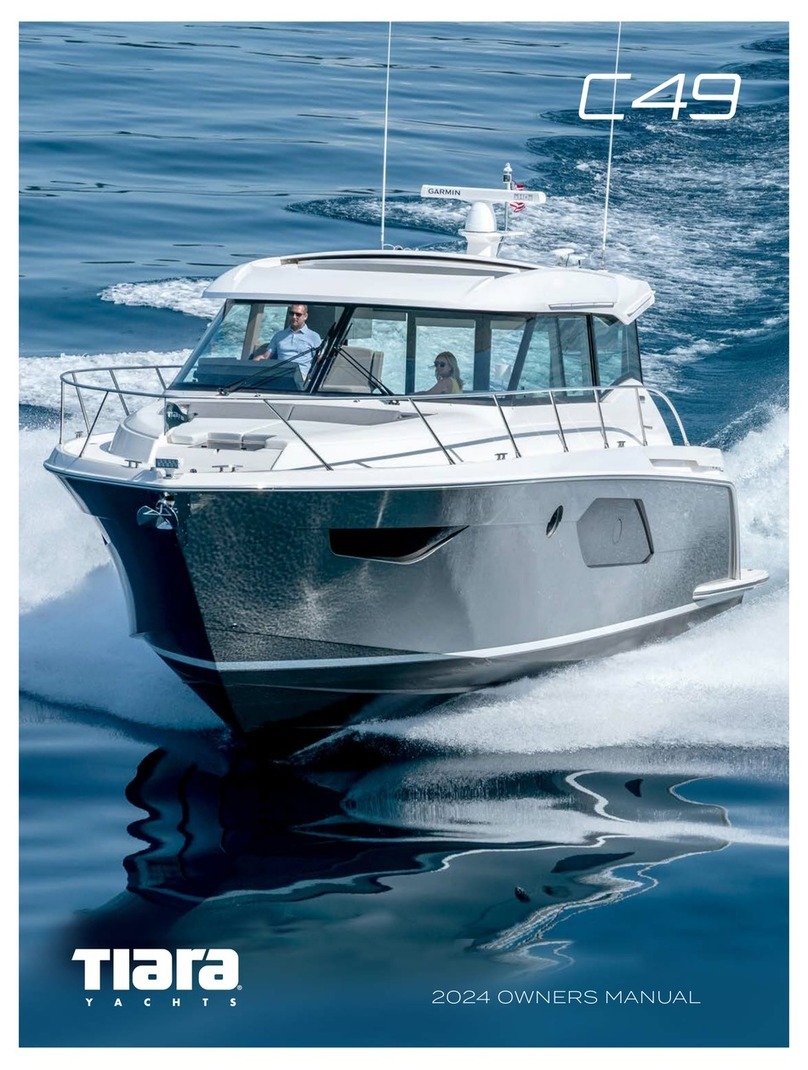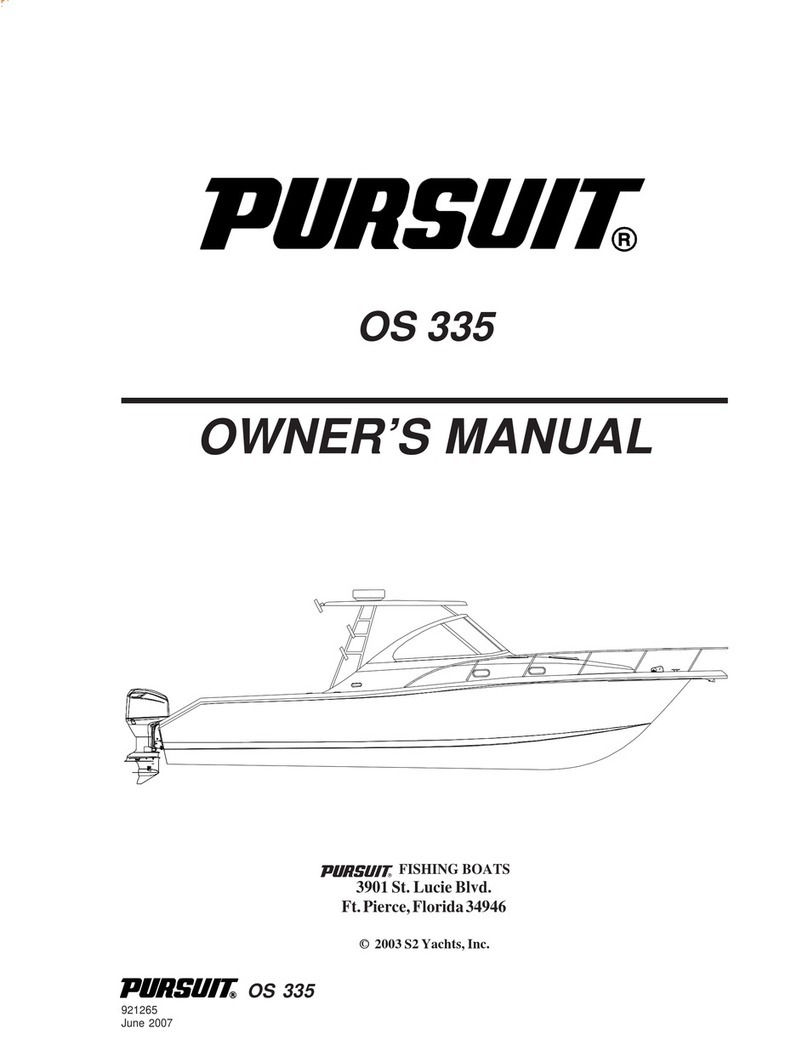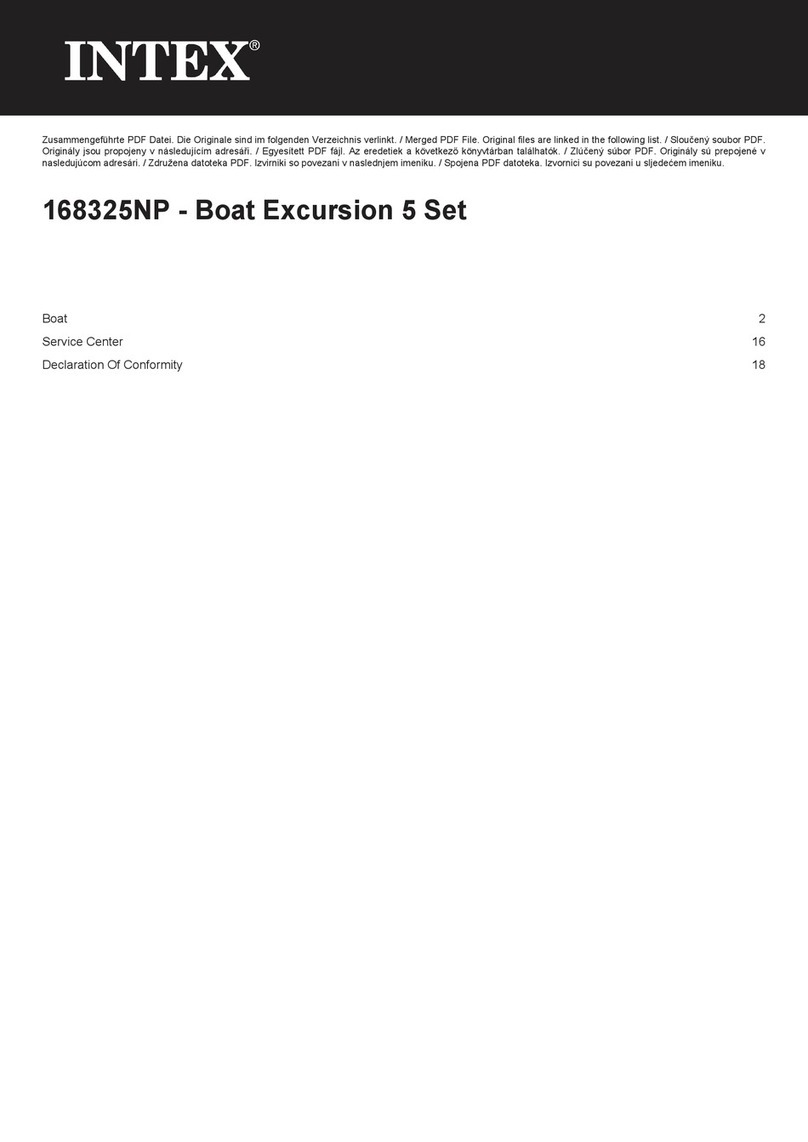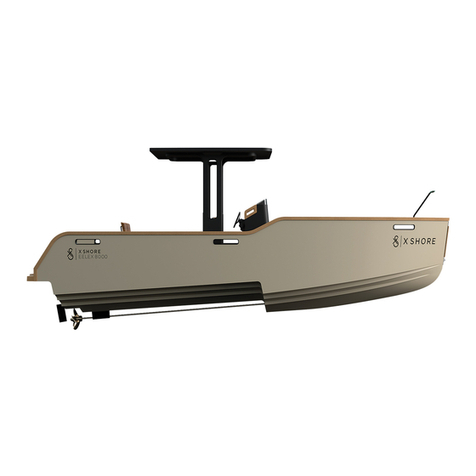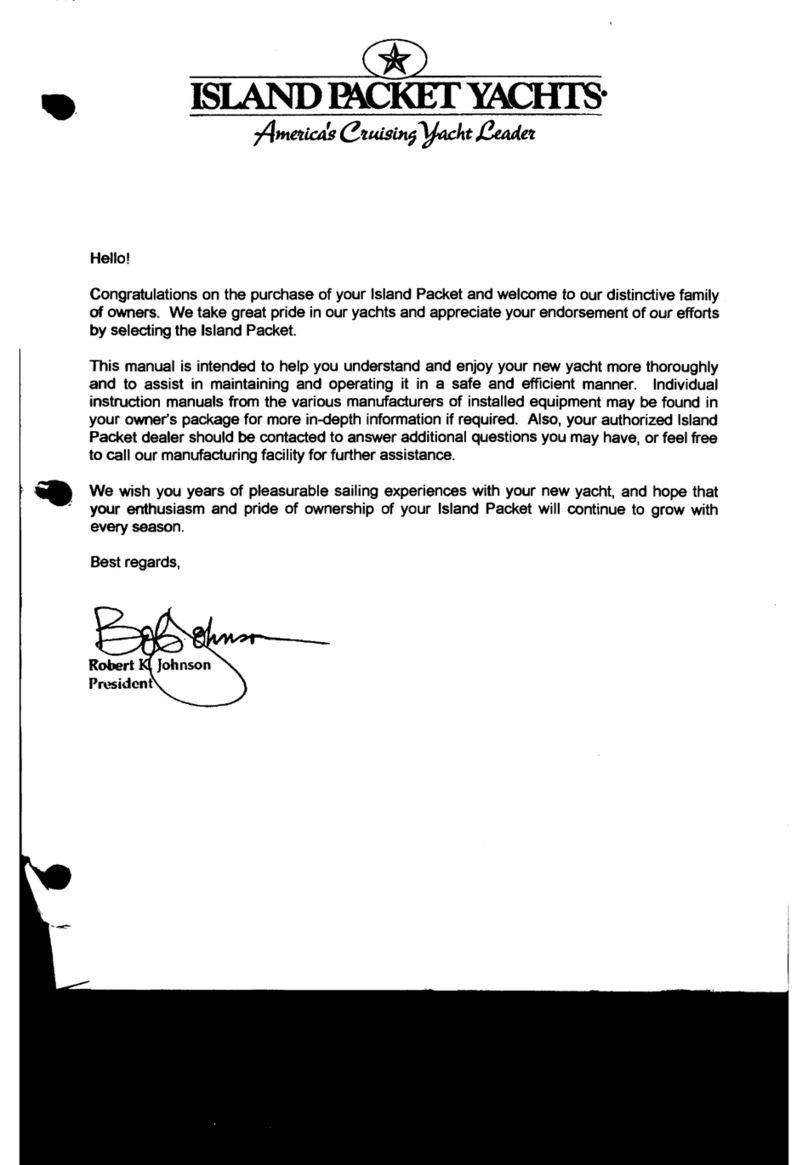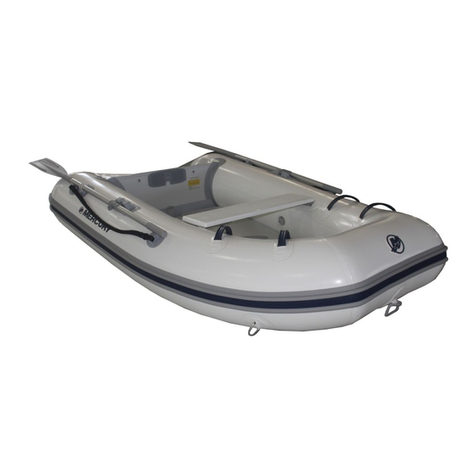
BARCA VENTUS: 8559378 / 8573177 / 8559362 / 8559366
Enhorabuena por la compra de una BARCA CAPERLAN VENTUS. Lee ee manual detenidamente; contiene la siguiente información:
1. Información importante
2. Precauciones de seguridad
3. Guía del usuario
4. Datos técnicos
5. Fin de la vida útil del producto
1. Información importante
Decathlon no acepta ninguna responsabilidad por cualquier accidente o lesión causada por el uso inadecuado de ee producto, el incumplimiento de las inrucciones proporcionadas en ee manual o las modicaciones realizadas a ee producto.
Para evitar lesiones graves o la muerte, sigue la información de seguridad de ee documento.
Para tu seguridad y satisfacción, aprende a utilizar ee equipo correctamente. Antes de usar ee producto, lee las inrucciones proporcionadas y consérvalas durante toda la vida útil del producto.
Aunque se han realizado todos los esfuerzos posibles para garantizar que la información contenida en ee manual sea precisa y completa, Decathlon no acepta ninguna responsabilidad por errores u omisiones.
Ea barca inable no es un juguete.
Ee producto eá diseñado para aguas continentales y no debe usarse en el mar.
Ee producto no eá deinado a ser utilizado por niños menores de 12 años. Los adolescentes de 13 a 17 años solo deben usar el producto bajo la supervisión directa de un adulto. Un adulto debe revisar todas las inrucciones
de ee manual con adolescentes (13 años o más) y explicárselas antes de usar la barca inable.
2. Precauciones de seguridad
Lee el manual y sigue las inrucciones de seguridad para realizar un montaje seguro y adecuado del producto, así como para su uso y mantenimiento.
Por tu seguridad, lee siempre las advertencias y precauciones que se incluyen en eas inrucciones. El incumplimiento de eas inrucciones de funcionamiento podría provocar lesiones graves o incluso mortales.
Usar la barca inable puede ser físicamente desaante y peligroso. El uso de ee producto expone al usuario a riesgos y peligros potenciales. El usuario debe conocer y comprender eos riesgos.
Ee producto no protege contra el ahogamiento. ¡Solo deben usarlo personas que sepan nadar!
Utiliza siempre una ayuda para la otabilidad.
Utiliza ee producto únicamente en los lugares y condiciones para los que ha sido diseñado.
Ea barca inable eá diseñada para pescar en aguas continentales tranquilas (Tipo II y Tipo V de la norma ISO 6185). Aprende a usar tu barca inable y adquiere experiencia en un ambiente controlado. Nunca navegues solo.
La barca inable ota incluso si eá volcada; nunca la abandones porque te ayudará a permanecer en la supercie y a ser más fácil de localizar. Asegúrate de ear en buenas condiciones físicas antes de utilizar la barca.
No utilices ee producto si eás bajo la inuencia de alcohol, drogas o medicamentos. No excedas tus capacidades físicas.
No excedas la capacidad máxima de carga del bote inable, que incluye el peso de los pasajeros y cualquier equipo a bordo.
La diribución desigual de la carga en la embarcación puede provocar desequilibrios, vuelcos y, por tanto, riesgo de ahogamiento. Informa siempre a un tercero de tu ruta y horario previos.
Las condiciones meteorológicas y marinas adversas pueden ser extremadamente peligrosas; revísalas siempre antes de salir.
Utiliza el producto cerca de la coa y prea atención a factores naturales como corrientes, vientos, olas, mareas y aguas poco profundas. TEN CUIDADO CON LOS VIENTOS Y LAS CORRIENTES FUERA DE LA COSTA. Nunca uses la barca
inable en clima tormentoso.
Comprueba que la barca inable no eé dañada antes de cada uso. Si notas algún punto deteriorado, no utilices el producto.
También revisa la válvula de drenaje en el espejo de popa antes de usarla: debe ear cerrado.
Evita que objetos alados entren en contacto con la barca inable.
Ina la barca a la presión nominal indicada en el producto para evitar el riesgo de sobreinado y/o explosión.
Utiliza el cojín del asiento para evitar quemaduras si la temperatura es alta.
Si utilizas un motor eléctrico con batería, ten cuidado de no volcar la batería. El líquido que hay dentro de las baterías de plomo es perjudicial porque el ácido sulfúrico es corrosivo e irritante.
El líquido puede dañar seriamente la barca inable y causar heridas a personas; Evita cualquier tipo de contacto con la piel e inhalación. No permitas que el líquido se disperse en el medio ambiente.
Si utilizas un motor de combuión, ten cuidado con el combuible: la mezcla es extremadamente inamable. También es irritante para la piel. No inhales los humos.
No permitas que el líquido se disperse en el medio ambiente.
Nunca excedas la potencia máxima del motor recomendada en la placa de metal del espejo de popa y en la guía del usuario.
Consulta las normativas locales y la información sobre los peligros para la navegación en una barca inable y/u otras actividades acuáticas.
Víete adecuadamente para las condiciones climáticas: el aire frío y/o el agua fría pueden provocar hipotermia.
Usa ropa adecuada (zapatos, protección solar, etc.) Lleva agua y comida. Si es posible, lleva un teléfono móvil en una funda impermeable. Explora aguas con las que no eés familiarizado, sacando tu embarcación del agua y cargándola para
evitar cualquier riesgo.
3. Guía del usuario
A. Conguración de la barca inable
• Saca la barca de la caja de cartón
• Coloca la barca sobre una supercie limpia, sin objetos que puedan dañar la eructura inable
• Localizar las válvulas
SUELO INFLABLE DE ALTA PRESIÓN: válvula de inado n.º 3, ubicada en la parte superior del suelo.
CUERPO DE LA BARCA INFLABLE: válvulas de inado n.° 1 y n.° 2 (dos válvulas para la barca de 1,8 m, tres válvulas para los otros tamaños) dentro de la barca, una para cada cámara.
QUILLA INFLABLE: válvula de inado n.º 4, ubicada en la parte superior de la quilla.
• Enciende la bomba de baja presión (se vende por separado) con la boquilla adecuada; ina la cámara en el orden que se muera arriba. Vuelve a cerrar la tapa una vez que hayas terminado de inar. No utilices un compresor de aire.
• Ina el cuerpo de la embarcación y la quilla a 0,24 bar / 3,5 psi.
• Ina el suelo de alta presión de la barca a 0,7 bar / 10 psi.
• Ensambla los dos remos y colócalos en los bloqueos de remo, uno hacia cada lado de la barca.
• Toma el asiento e insértalo en el soporte
• La barca eá lia para botar
En ausencia de herramientas para medir la presión: si empieza a ser difícil seguir bombeando y el tubo interior de la barca inable eá lo sucientemente rígido como para no deformarse ni siquiera presionando con una mano,
se habrá alcanzado la presión nominal.
B. Mantenimiento después del uso
• Enjuaga la barca inable con agua limpia después de cada uso para evitar daños causado por la arena y la luz solar.
• Colócala verticalmente para permitir que el agua salga.
Secado
• Desinar el producto
• Deja que la barca se seque al aire libre antes de plegarla. Si no eaba seca en el momento de doblarla, recuerda secarla en casa, de lo contrario podría enmohecerse.
ADVERTENCIA: ¡Nunca dejes el producto inado bajo la luz solar directa! Dejar la embarcación a pleno sol cuando no eá en uso puede dañarla gravemente.
Plegar y transportar la barca inable
• Utiliza una supercie limpia y seca
• Retira el asiento y los remos
• Desina la barca presionando las válvulas
ES
USG VENTUS.indb 10 30/11/2020 17:25
